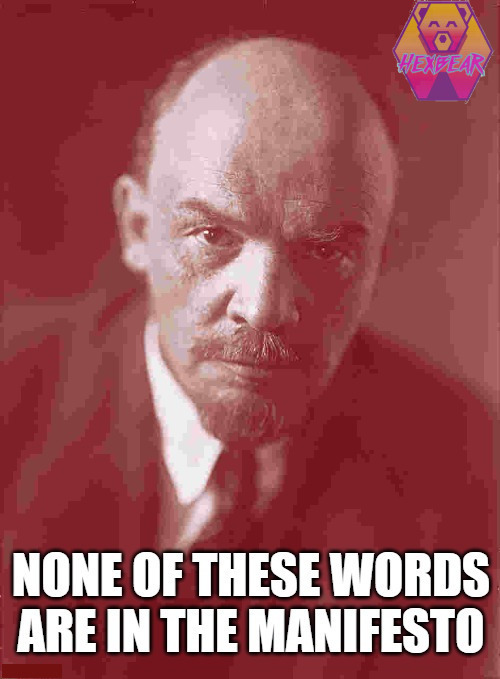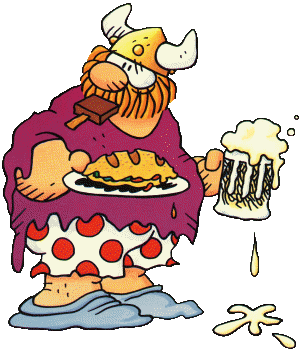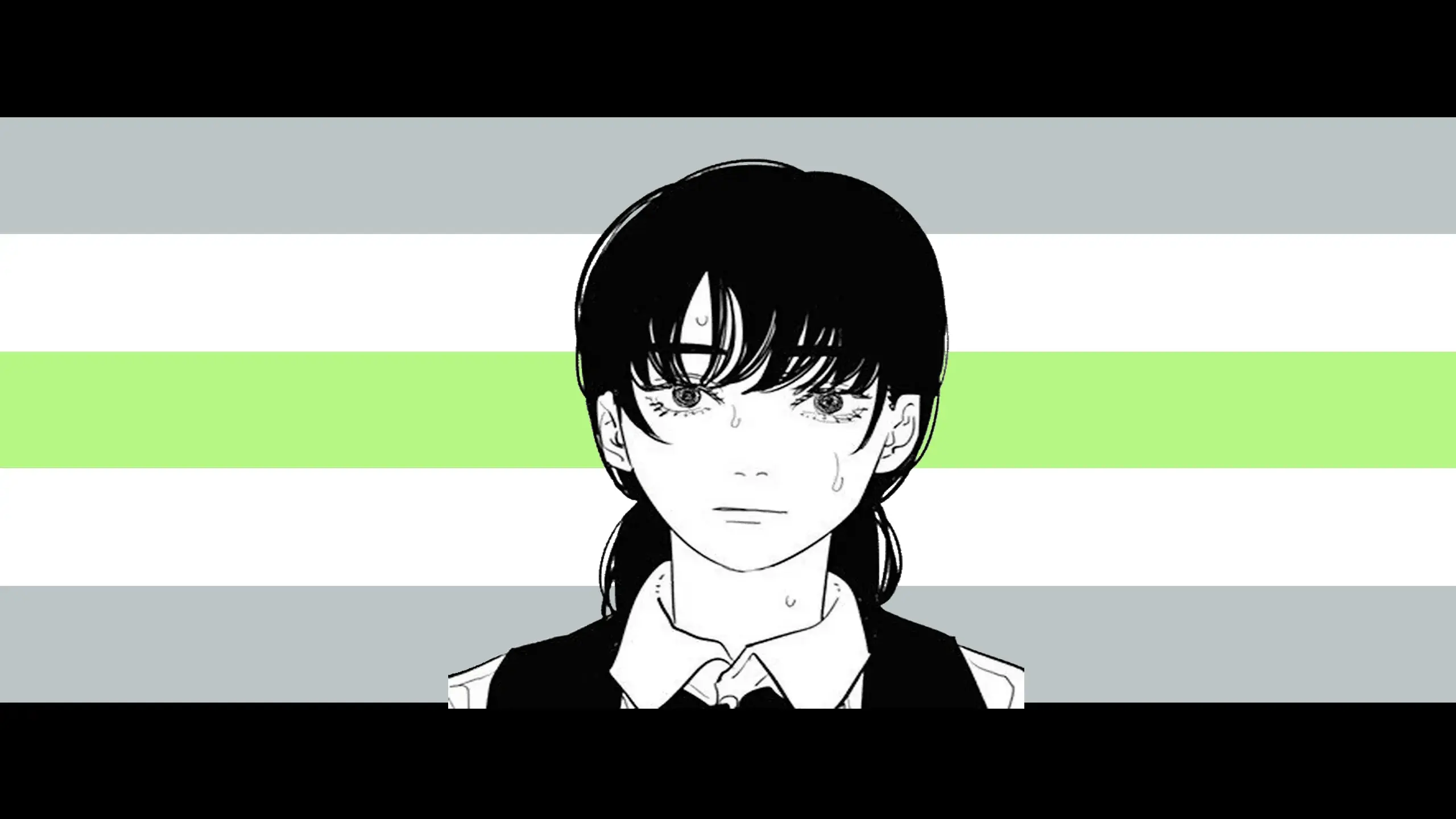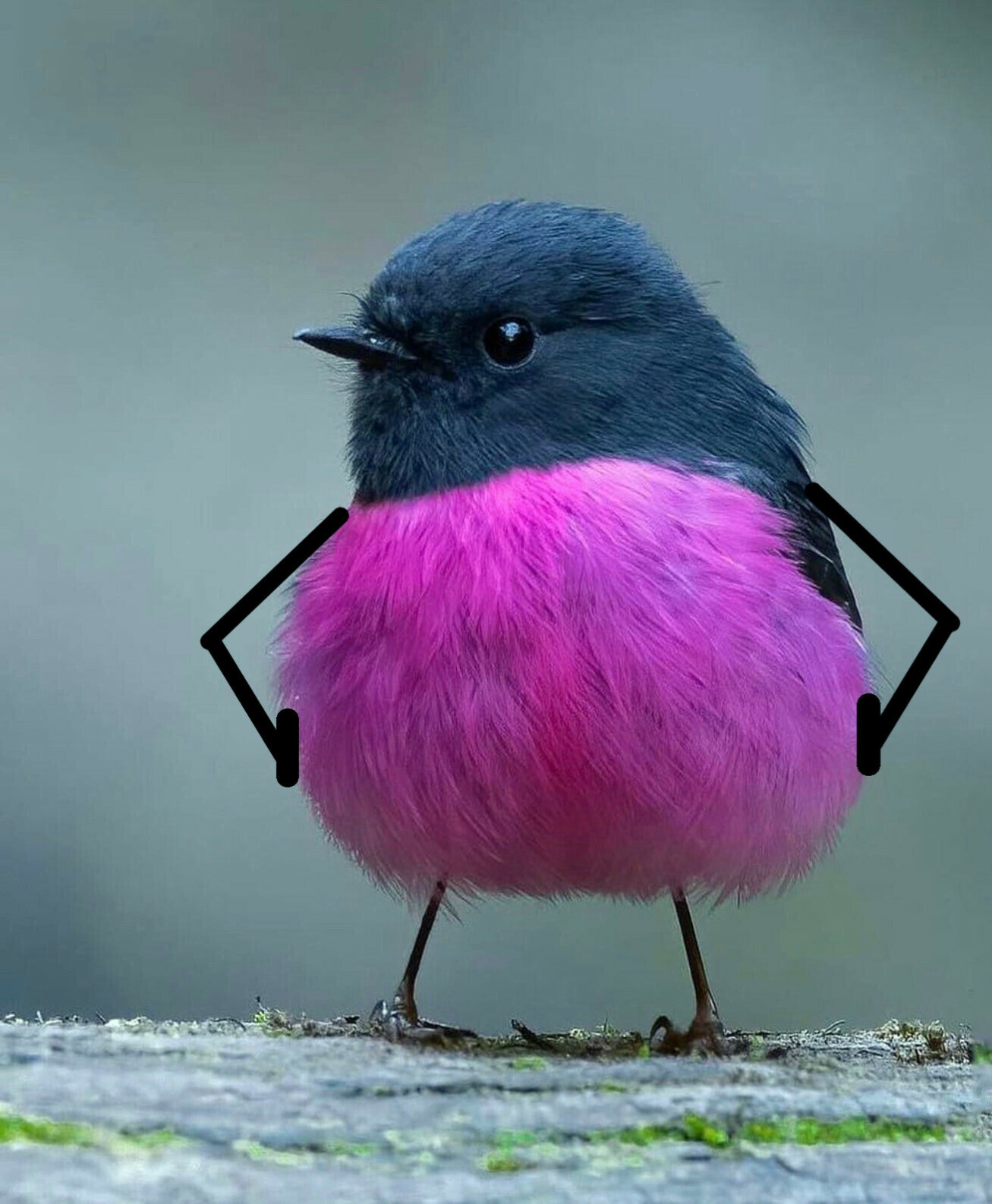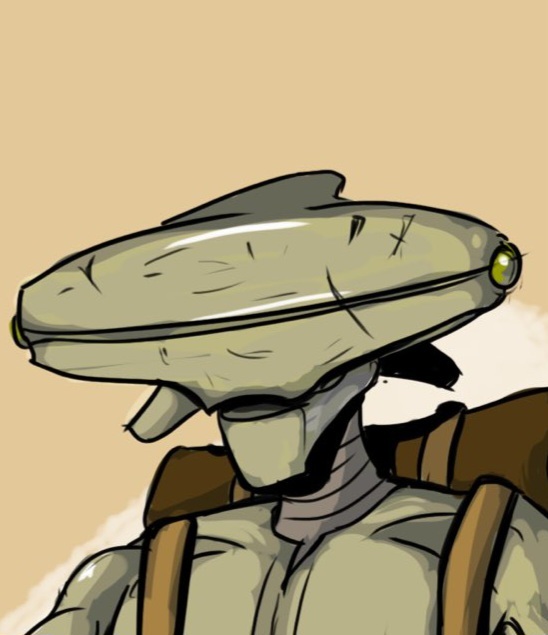I was recently in a conversation with my mom where she mentioned how a lot of her friends and relatives in the USA have been sharing on Facebook just absolute nonsense about Norway: videos and posts with exaggerated if not flat-out incorrect facts about the country, and more notably, “AI-generated” pictures of fairy tale-esque natural scenes. Mom said how she pointed out to one of her relatives who shared such a “photo”, how it was made up, and that relative got a bit irate about my mom’s comment and said, “Who cares if it’s AI?! It’s a nice picture!” — even though that relative seemed to fully believe it was a real photo right until mom pointed out it wasn’t, and left no indication that it was not a real photo.
…So that’s a bit concerning, “post-truth” as they say.
Relaying this anecdote to me, mom remarked, “I mean, seriously, what if someone came to Norway hoping to see these crazy flowers and natural phenomena and stuff? The locals would be like, ‘What the heck are you talking about? That doesn’t exist.’ — So how can someone share misinformation like that, and just not care simply because it’s a ‘nice picture’? It’s bizarre.” — And I said that someone coming to Norway because of “AI-generated” pictures would be like the modern-day version of Gregor MacGregor’s Poyais scheme.
Anyways, after relaying this anecdote to me, mom then remarked something to the effect of that it’s as if her friends and relatives in the USA think of Norway as this magical mystical fairy tale country, and will cling to anything that lets them keep that conception, no matter how ridiculous it is, and will get upset if you try to poke holes in their “mythologizing”. And I said, “That’s called borealism, isn’t it?” — and she hadn’t heard that term, so I read the Wikipedia article to give her a basic idea of it.
Borealism is a form of exoticism in which stereotypes are imposed on the Earth’s northern regions and cultures (particularly the Nordic and Arctic regions).
The term was inspired by the similar concept of Orientalism, first coined by Edward Said. An early form of Borealism can be identified in antiquity, especially Roman writings; but, like Orientalism, Borealism came to flourish in eighteenth-century European Romanticism and Romantics’ fantasies about distant regions. Borealism can include the paradoxical ideas that the North is uniquely savage, inhospitable, or barbaric, and that it is uniquely sublime, pure, or enlightened.
A further form of borealism is the explicit invocation of the boreal by white-supremacist far-right politicians.
The Wikipedia article neglects to mention that the concept of borealism was first coined by Kristinn Schram of the University of Iceland in 2011, in articles like “Banking on Borealism: Eating, Smelling, and Performing the North” and “Borealism: folkloristic perspectives on transnational performances and the exoticism of the North”
In any case, not long after I told my mom about borealism, we noticed that NRK was airing Der ingen skulle tru at nokon kunne bu, meaning something like “Where Nobody Would Think Somebody Could Live” — this is a TV show about people who live in inhospitable places around Norway, close to nature and all that. And mom remarked, “Is that a form of self-borealism?”, and I said, “Maybe.”
But ultimately, just because someone wrote a couple articles about it, and it got a Wikipedia page, doesn’t necessarily mean that it is an accurate or useful concept. The term “borealism” is not in any major dictionaries — not even Wiktionary — and the concept of borealism has seen very little discussion or usage in academia compared to orientalism since it was first introduced. This can probably be partially chalked up to orientalism being a much older term that covers the exoticization of a much larger share of Earth’s land and population, where the power dynamics, harm, and extremity of such exoticization tend to be much more readily apparent.
From my own perspective I can certainly say that I’ve seen people exoticize the Nordic and Arctic regions in weird ways, and locals do by all means play into these same exoticizations — and I can further say that I absolutely believe that the presentation of Norway as exotic in this manner is tied to the power dynamics between Norway and other regions.
However it also kinda feels like… can’t you say that about every region? Like are we also gonna have an “occidentalism” and an “australism” just to get the “full set”, or is there really something special about the concept of the “exotic north” that makes it uniquely deserving of its own term? I suppose I should read Kristinn’s articles first to get a better idea of what he meant by the term and why he thinks it’s useful.
This can probably be partially chalked up to orientalism being a much older term that covers the exoticization of a much larger share of Earth’s land and population, where the power dynamics, harm, and extremity of such exoticization tend to be much more readily apparent.
I would argue that orientalism and borealism are ideological antipodes as far as their use within the superstructure is concerned. Whereas orientalism (and related concepts like White Man’s Burden) creates a mandate for the subjugation of a region, borealism constructs an idealized hyper-whiteness. An exemplary model justifying white supremacy. Of course, the mythological Nordic is a bit too quirky, a bit too odd, a bit too much Ham Sandwich Race, so that us occidentals do not have to feel bad and can keep treating their home as a tourist destination that is a bit too devoid of sunlight, a bit too cold and a bit too fond of fermented fish delicacies to want to live there permanently, but it ultimately fits like a puzzle piece into the racialization narratives of western chauvinism.
Very well said!
I just heard of this, so IDK what I’m talking about, but wouldn’t borealism include indigenous groups in these arctic regions that were colonized? Like maybe modern borealism is all about white people, but those white people did in fact subjugate those regions and do genocides. And there’s definitely a kind of paradoxical view of people in arctic regions similar to the “noble savage” view of indigenous groups in North America.
Very good point, hadn’t considered this because i’ve also just heard the term for the first time and was just typing out what spontaneously came to mind. Definitely my inner krakkker at work when i left out the Saami or the Inuit and First Nations in Greenland and Kanada (which, at least from a European perspective, i would probably include in borealism).
And also the Alaska Natives and for that matter the Natives of the Russian Far North.
Edit: Apropos the Natives of the Russian Far North, in (at least some) South Slavic languages like Serbo-Croatian, Tunguzija is used as their equivalent to “Timbuktu” in the sense of “nonspecific distant, remote, exotic place” — “Tungus” being a dated term for Evenks, who are native to a large area in the east of Krasnoyarsk Krai, very close to the geographical midpoint of Siberia. I learned this little fact because there’s a Svemirko album called “Tunguzija” and I got curious about what that meant.
Does the Russian Far North count unter borealism? Not debating the colonization under the czars there, ofc, what i’m wondering is if Siberia falls under the same exoticizing lense as the northern parts of the political west or if it’s genuinely distinct from the mythologization of the Nordics. It could be argued that when westerners think of that part of the world, they think of gulags, more gulags, and maybe mammoths in permafrost. It’s the harsh and alien parts of the imagined North, mixed with a severe dose of anticommunism, not the socdem fairytale land under the polar lights we imagine Norway or Iceland as, and on the mental map of westerners, it is filled in with the same color as the post Soviet block, not the Nordic one. But like i said, i’m not familiar with the concept of borealism so far, so this is more my guesswork what the term entails.
I did specifically say the Natives of the Russian Far North as opposed to the Russian Far North in general — and I would in that case say that insofar as Westerners think about Nenetsians or Evenks etc, like, at all, that this is done with the same brush as the Sámi and Inuit. Relatedly, in Russia, I know an album called MIG-25 by Krasnoyarsk-based Dom Modeley, which has lyrics about shamans’ strange herbs, about the cold hand of “Miss Lapland” slowly killing stranded travelers, about a man stuck alone at some sort of research or weather station, among other things, which really strikes me as not much different from how places like Alaska or Greenland or Sápmi are popularly imagined in the West.
This being said, if DPRK, China, Laos and Vietnam are in the West seen through the lens of orientalism plus anticommunism, wouldn’t it also be possible to say that the Russian Far North is on the other hand borealism plus anticommunism? There’s a YouTube channel called Life in Yakutia currently with 240,000 subscribers, whose most popular videos have millions of views and all put the temperature in the thumbnail. So I’d say that although the Russian Far North isn’t necessarily a socdem fairy tale land, that people’s imaginations are still by all means stirred by the sparse population amidst vast swathes of wilderness and extreme cold, and the grit and wisdom they imagine it takes to live in such an environment.
I mean, I don’t know about you, but I learned about the Tunguska event, about the Daldykan turning red, about the Obskaya-Bovanenkovo Line et cetera as a preteen or teenager — so either I was just particularly clever and curious for my age, or it’s a bit presumptive to say that Westerners’ awareness of the Russian Far North begins and ends at gulags.
I found a YouTube link in your comment. Here are links to the same video on alternative frontends that protect your privacy:
Remember Sami people, too. Indigenous Europeans who have long been subjected to anti-indigenous violence by northern Euros.
AcidSmiley already mentioned the Sami
The Inuit of Greenland has two roles in white Danish imagination, either they are the “noble savages” wearing pearl embroidery and living in harmony with nature as they row their kayaks on the icy fjords or they are the “tragic savages”, hapless children unable to take care of themselves in the modern world instead succumbing to alcoholism, apathy and hopelessness.
The noble and the tragic savage are two sides of the same coin and neither stereotype leaves them much agency.
It is my impression that the term borealism encompasses attitudes towards all northern peoples, Indigenous or colonizer.
Sounds like that applies to Ireland as well, although I don’t know if it would be the correct term. Americans have an image of Ireland as a magical old place where the forests are alive, and some really don’t like knowing that Ireland is a modern country. Some Irish people also are very insistent that Ireland is more superstitious and magical than it is, putting a lot of importance on tales of the fae and respecting magpies and so on, even though most Irish people don’t actually know anything about folklore.
I was honestly thinking the same thing as I was writing this.
I’ve heard people call that “hibernophilia” before, dunno if that’s a proper term though
That sounds like an accurate term anyway
This is weird to me because Norway does have a lot of really gorgeous fjords and whatnot.
The far north really is witchy and strange though. Like legitimately. The sun goes sideways around the world at summer soletice and doesn’t really rise at all for winter solstice, and above the Arctic circle it stay in the sky or hides for months at a time. There are giant invisible bears that hunt you. There are two different kinds of unicorn fish. The salmon runs are the heartbeat of the world. Some of the only non-tropical rainforests are in the Pacific Northwest. Depending on how you reckon it Denali is the tallest mountain in the world. The auroras are a regular sight in the sky. The magnetic pole wanders around like a drunkard. Orcas are almost certainly watching us and thinking strange dolphin thoughts. The ravens are smart enough to know what days of the week the trash is taken out and will be waiting for it with eager anticipation. More than most places half ton mega fauna is a routine problem that people have grown used to dealing with.
This is all based on my experiences with Alaska, but having more or less grown up in the remote, isolated north (in the “big city” of Anchorage) when I’m in the lower 48 most of it, especially between the Appalachians and the Rockies, looks like a post apocalyptic wasteland. Farmland is dead land, flattened and stripped of all life to be paved over with monocrops, cattle land is dead land, huge chunks of the South East are overrun with invasives, the whole world is a network of flat, endless highways and soulless cloned strip malls and chain stores.
Alaska is a completely different world in ways i cannot adequately describe to someone who hasn’t spent extensive time there. It’s not magical, it just hasn’t been paved flat by industrial capitalism. It still has wild animals in dense populations. Theres still an integration of the “natural” and human worlds where it’s just one world that we all live in - the people, the bears, the eagles, the squirrels, the salmon, the halibut, the orcas, the moose, the whales, the ptarmigans. There’s no distinctive line between the human and natural world, there’s just the world. There’s still active geological formation happening with the glaciers and a few volcanos, and there was much more of that i. The 20th century as the slow death of the glaciers really changed parts of the landscape. There’s mosquitoes in a way that people down south have never really experienced no matter how bad they think their bugs are. Even before deet the mosquitoes in the lower 48 never dimmed the sun.
Again, it’s not magic, it’s just very, very different from life in most of the lower forty eight. There really isn’t anywhere on the continent as shockingly lush, dense, and green as the Pacific Northwest in the summer. You have to go all the way down to the jungles in the lower Yucatan to find forests like that again. You mostly just don’t see bears regularly in the lower forty eight and mostly don’t have to teach kids near safety or how to deal with moose.
Compared to Ohio it might as well be Narnia. So, it seems pretty natural to me to exoticize the far north. It really is extremely exotic to most euros, to the point of being pretty alien when you consider the extremes of dark and light or some of the very weird landscapes like the tundra, proper mountains, rainforests, fjords.
I’m from southeast Michigan right near Ohio, and “up north” is something mythologized/special to us here also, with many people having cottages up north, or traveling there for rest and recreation. I have made a tradition of going to the top of the upper peninsula for the last week of the year.
Southeast Michigan was also once beautiful pre-colonization—though it’s been flat since the glaciers retreated—dense, lush forests with rivers and lakes, but now it’s suburban sprawl. Up north is an escape from the apocalyptic wasteland we created and maintain as a consequence of our industrial capitalism.
We do the same thing with quaint small towns or people friendly cities – we’ll travel to them as relief from the shitty sprawl we live in, but then
refusechoose to only live in sprawl, or refuse to support policies that make anything but sprawl possible.It seems we assume an inevitability of the industrial wasteland we live in, and mythologize anywhere that we haven’t yet ruined, instead of realizing we’re choosing to form our built environment this way, and choosing to built a different world.
A Hexbear recently showed me a Tlingit-language rap song called “Spirit” by Juneau-based youth music group IAK, and the scenery of the Alaska panhandle certainly was stunning — and that would certainly be the least exotic part of Alaska by my own standards. So Alaska certainly is a part of the world that captures my own imagination.
As someone who has grown up in these countries I’d say that this is probably heavily tied to nationalism and banal nationalism. And is also super-actively utilized in country branding.
I have watched “at nokon skulle bu” and it perfectly fits the nation building rhetorics that are common in these countries with a myth of “the independent farmer/dweller” who (a man) lives of the land by carving a spot from the wilderness etc. The show btw. is also very pathriarchal in its narrative and extremely heteronormative with nordic country equality discourse qualities. It is the perfect “The Nordics” PR show.
From the Finnish pov I know that in the late 1800s the national bourge heavily took on this project of portraying nationalism into the local nature, the forests and fjords and animals. And unifying the masses under this image. This never included the indigenous Sami or Karelian or other minorities however.
Tolkien supposedly kind of engaged in this myth building about the North or the people living in the north and so did the nazis. Which is why I think it resembles the sort of myth making you often see of places like the Scottish Highlands as well. Places were groups of independent white men live of nature and the nature is wild. I think it is coded with white supremacy.
But today in neoliberalism these countries are very effectively commodifying this. And also commodifying the myths of the socdem haven in the process. The way the nordic model is talked about or things like “finland has eradicated homelessness” get thrown around are a testament to this. You add to this a few pictures of gorgeous aurora and a discourse about equality, the myth starts to live a life of its own. But a lot of actual time and money is spent on this branding I think, tourism is what helps post-industrial capitalists and landowners survive.
So I don’t know. It doesn’t seem like it can be compared to Orientalism because a lot of this originates from within. Then again some of these countries have been more oppressed than the others so these nation building rhetorics are not a monolith.
How much of it really did originate from within, though? Like maybe I just don’t know Norway’s history well enough — you never can — but a loooot of the poets and writers and artists who played a crucial role in developing romantic nationalism in Norway, studied abroad, right? The iconic Brudeferden i Hardanger was painted by Hans Gude and Adolph Tidemand who both studied in Düsseldorf; otherwise Johan Nordal Brun composed Norway’s first national anthem, “Norges Skaal”, originally as a drinking song for the Norwegian Society in Copenhagen. Otherwise still, I feel like Norway has generally always imported a lot of media from other countries, from centuries ago and into the present day.
So basically, Norwegians would’ve probably been decently aware of how the country was perceived abroad — if not outright surrounded by the perspectives of more prestigious outsiders while studying abroad — and I have to imagine that that had a pretty big impact on how Norwegian nationalism developed.
That is true and same for Finland. All of them here also had non-Finnish names originally that they then changed to names sounding Finnish that were often nature-theamed during this period.
Most of the bourgeoisie also never were from here, the families that is.
The at least banal nationalism of today is largely based on the things from this era.
So maybe a better framing would be that it originates from European enlightenment.
Yeah.
As someone long interested in magic and the occult, there’s quite a bit of it in those circles. Romanticizing and exoticisizing of pretty much everything is part and parcel of most occult practices but especially modern syncretic beliefs like neopaganism, some wicca, and chaos magic.
For orientalism, you of course have the mystic east, the Yijing and the Dao. That gets wrapped up with cartomancy via trade through the middle east and Italy, and the tarot connections with the Romani.
The borealism comes in, of course, via the runes and the Nordic myths. Especially among white (and white supremacist) practitioners, there’s a belief in a stronger ancestral connection to those people and practices. Also to the Druids and Celtic shamanism. This same mindset in people of other backgrounds can result in ties back to indigenous beliefs or to African or other old-world belief systems. But for a lot of essentially “historyless” Westerners (people whose families are distantly mixed European) falling back on that artificial “white history” gives them a feeling of connection with the past.
For the authors in that mindset, ancient Norway may as well have been ancient Egypt or Mesopotamia because they equally mystify, obscure, and entangle history to weave a parable entirely for the modern practitioner.
“australism”
We often have to explain to tourists that they cannot ride in kangaroo pouches and that if they try to drive to Darwin across the desert in their Kia rental, they will die.
Reminds of “Paris Syndrome” or whatever. Basically Japanese tourists having a breakdown when confronted with the reality of Paris vs their idealized image before visiting.
deleted by creator
Finns in the USA were called “China Swedes” in the old days, you know.
Lol what on earth, I just chose Finland at random but burger racism beat me to it
Yeah, Finns just straight up weren’t seen as white back in those days, they were classified as part of the “Mongolian race” ostensibly because Finnish is a Uralic language rather than Indo-European.
They’re one of those groups whose whiteness is very conditional. And Sami people aren’t white at all, being indigenous and very much treated as indigenous by colonial Sweden and Finland.
The situation with the Sámi in Norway is by all means colonial as well. I like to remind people who live outside of the Nordic countries, who might think that the Sámi are “white” because of their pale skin, that this was what joikakake boxes looked like before 2021:
CW: racist caricature, meat

Incidentally, I have Sámi and Kven flags just over my bed. You don’t really hear much about Kvens or for that matter Forest Finns, though.
ERI’m not familiar with Kvens. Are they an ethnic group in that region?
Whenever Sami people come up I like to stand Adrian Angelico, a Sami man, opera singer, and all around cool dude.
Yes.
I found a YouTube link in your comment. Here are links to the same video on alternative frontends that protect your privacy:
The lustful Finn longs in his heart for… St. Petersburg? idk who they tried to conquer
makes me think of the reverence towards the “nordic model” in politics/econ. for self-borealisim, i wonder if its also tied to Norways discrimination of Sami people. so it would make more sense as a term, because there is a coloniser/colonised relationship. the tv show that you mentioned is a classic colonialist trope of painting a land as unpopulated.
I guess so, but I’m pretty sure most of the episodes of the show are set south of the Sámi traditional lands.
In some episodes they are in the traditional lands and in what I assume to be an attempt to be balance, there are a few where one of the people featured has Sami roots.
Most of the episodes interestingly really work to other both the people the show features as odd and not living to the norm and yet also feature them as exotic. They brush ever so cautiosly on the ways the country has ended services and factually enforced remote areas to be places where only the most privileged can now choose to live.
This show would be a great one to analyze as a whole.
I suppose I should actually try watching it, then.
Go for it. I had to eventually give up, because the way the narration tries to always make it about the nuclear family or how odd it is if someone to not be in a heteronormative relationship and how everyone just longs for that companionship etc. got so triggering that I had to walk away. You’ll definitely notice it.
Gorgeous landscapes though.
https://www.brepols.net/products/978-2-503-58502-4
You might find this one interesting.
This one is a little more Canada-specific and infrastructure-specific (and I’m only 1/3 of the way through), but I’ve found the investigation into what the modern North is and how it came to be interesting. Many Norths: Spacial Practice in a Polar Territory
Cheers, I’ll add it to my pile.
That looks very interesting yes.




